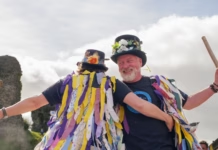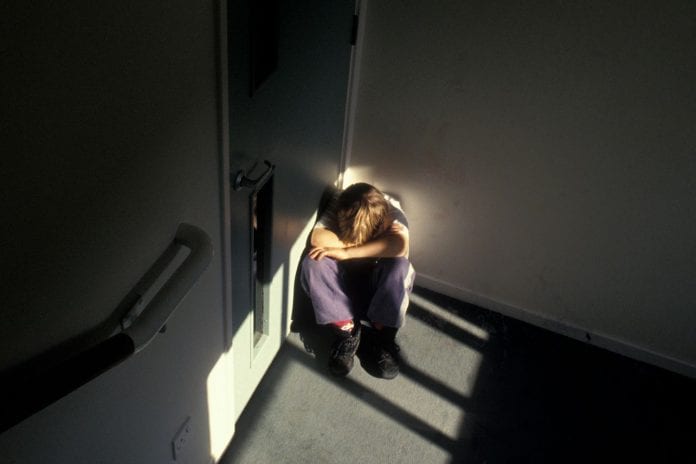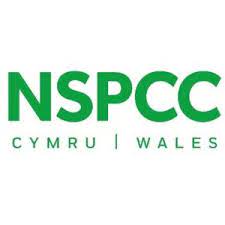- Child abuse image offences in Wales recorded by police up 43% since 2016/17, reaching 6,435 over just five years
- The number of offences across the UK up 37% since 2016/17, totalling to 107,000.
- NSPCC sets out five-point plan to strengthen Online Safety Bill so it decisively disrupts the production and spread of child abuse material on social media
More than 6,000 child abuse image crimes were recorded by police forces in Wales over the last five years, new NSPCC research reveals.
Results from Freedom of Information requests to Welsh police forces show the number of offences relating to possessing, taking, making, and distributing child abuse material peaked at 1,541 last year (2020/21) – up 43% from 2016/17. These figures do not include Dyfed Powys Police*.
Offences recorded by police UK-wide passed 100,000 in five years, with more than 25,000 crimes last year – up 37% since 2016/17.
NSPCC Cymru/Wales said social media is being used by groomers as a conveyor belt to produce and share child abuse images on an industrial scale. They added that the issue of young people being groomed into sharing images of their own abuse has become pervasive.
The child protection charity is urging Culture Secretary Nadine Dorries to seize the opportunity to strengthen the Online Safety Bill, so it results in decisive action that disrupts the production and spread of child abuse material on social media.
Offences also jumped by nearly a fifth (18%) across the UK during the first year of the pandemic, which the NSPCC previously warned had created a ‘perfect storm’ for grooming and abuse online.
They said that behind every offence could be multiple victims and images, and children will continue to be at risk of an unprecedented scale of abuse unless the draft legislation is significantly strengthened.
Ben* was 14 when he was tricked on Facebook into thinking he was speaking to a female friend of a friend who turned out to be a man. Using threats and blackmail he coerced Ben into sending abuse images and performing sex acts live on Skype. The images and videos were shared with five other men who then bombarded Ben with further demands.
His Mum, Rachel*, said: “The abuse Ben suffered had a devastating impact on our family. It lasted two long years, leaving him suicidal.
“It should not be so easy for an adult to meet and groom a child on one site then trick them into livestreaming their own abuse on another app, before sharing the images with like-minded criminals at the click of a button.
“Social media sites should have to work together to stop this abuse happening in the first place, so other children do not have to go through what Ben did.”
Ahead of a report by UK Parliamentarians who scrutinised the draft Online Safety Bill expected next week, the NSPCC, which has been at the forefront of campaigning for social media regulation, set out a five-point plan to strengthen the legislation so it effectively prevents online abuse.
The charity’s online safety experts said the Bill currently fails to address how offenders organise across social media, doesn’t effectively tackle abuse in private messaging and fails to hold top managers liable for harm or give children a voice to balance the power of industry.
The NSPCC is critical of the industry response to child abuse material. A Facebook whistle-blower recently revealed Meta apply a return-on-investment principle to combatting child abuse material and don’t know the true scale of the problem as the company “doesn’t track it”.
And research by the Canadian Centre for Child Protection has raised concerns about whether some platforms have consistent and effective process to takedown child abuse images, with some companies pushing back on removing abuse images of children as young as ten.
NSPCC Chief Executive, Sir Peter Wanless, said: “The staggering amount of child sexual abuse image offences is being fuelled by the ease with which offenders are able to groom children across social media to produce and share images on an industrial scale.
“The Government recognises the problem and has created a landmark opportunity with the Online Safety Bill. We admire Nadine Dorries’ declared intent that child protection is her number one objective.
“But our assessment is that the legislation needs strengthening in clear and specific ways if it is to fundamentally address the complex nature of online abuse and prevent children from coming to avoidable harm.”
The NSPCC’s five-point plan lays out where the Online Safety Bill must be strengthened to:
- Disrupt well-established grooming pathways: The Bill fails to tackle convincingly the ways groomers commit abuse across platforms to produce new child abuse images. Offenders exploit the design features of social media sites to contact multiple children before moving them to risky livestreaming or encrypted sites. The Bill needs to be strengthened to require platforms to explicitly risk assess for cross platform harms.
- Tackle how offenders use social media to organise abuse: The Bill fails to address how abusers use social media as a shop window to advertise their sexual interest in children, make contact with other offenders and post digital breadcrumbs as a guide for them to find child abuse content. Recent whistle-blower testimony found Facebook groups were being used to facilitate child abuse and signpost to illegal material hosted on other sites.
- Put a duty on every social media platform to have a named manager responsible for children’s safety: To focus minds on child abuse every platform should be required to appoint a named person liable for preventing child abuse, with the ultimate threat of criminal sanctions for product decisions that put children in harm’s way.
- Give the regulator more effective powers to combat abuse in private messaging: Private messaging is the frontline of child abuse but the regulator needs clearer powers to take action against companies that don’t have a plan to tackle it. Companies should have to risk assess end-to-end encryption plans before they go ahead so the regulator is not left in the dark about abuse taking place in private messaging.
- Give children a funded voice to fight for their interests: Under current proposals for regulation children who have been abused will get less statutory protections than bus passengers or Post Office users. There needs to be provision for a statutory body to represent the interests of children, funded by an industry levy, in the Bill.
The NSPCC are mobilising supporters to sign an open letter to Nadine Dorries asking the Culture Secretary to make sure children are at the heart of the Online Safety Bill.
The NSPCC’s full analysis of the draft Online Safety Bill is set out in their ‘Duty to Protect’ report.

| [donate]
| Help keep news FREE for our readersSupporting your local community newspaper/online news outlet is crucial now more than ever. If you believe in independent journalism,then consider making a valuable contribution by making a one-time or monthly donation. We operate in rural areas where providing unbiased news can be challenging. |






















